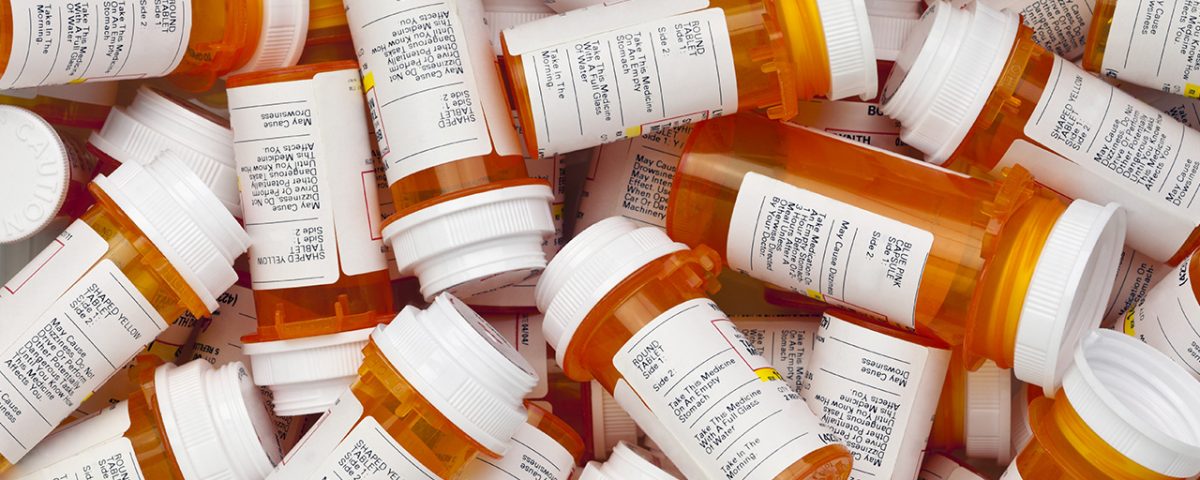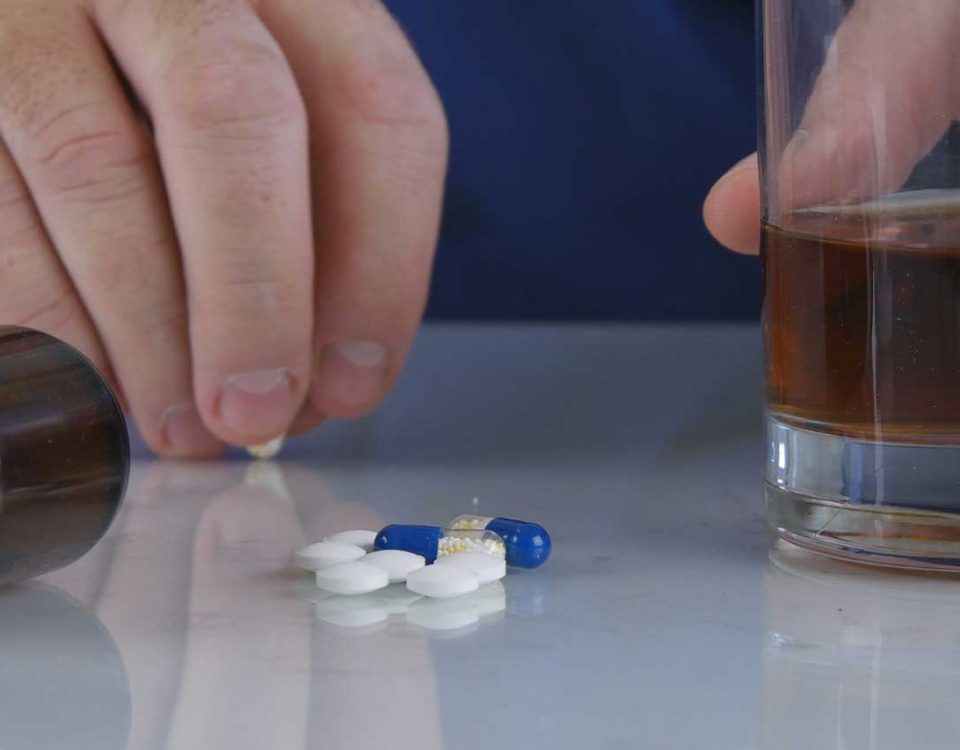Prescription drugs are controlled substances that can only be legally obtained with a prescription from a doctor or healthcare professional.
It’s customary for doctors to weigh out the pros and cons of certain medications before prescribing them to their patients. However, despite the many regulations on prescription drugs, prescription drug abuse is still a concern in the United States. The fact of the matter is that although they’re relatively safe to take in certain doses, many medications have the potential for abuse and addiction. Also, when used incorrectly or not as a doctor recommended, these prescriptions can lead to addiction. But how does prescription drug abuse affect the brain? What makes them so addictive?
What Is Prescription Drug Abuse?
Prescription drug abuse is the use of prescription drugs or medications in a way that they are not intended by the prescribing doctor. Some examples of prescription drug abuse include mixing medications, taking someone else’s medication, taking the drugs in a way they weren’t intended to (such as snorting them or injecting them), and taking higher doses than your doctor instructed. People may engage in prescription drug abuse for various reasons, including to relieve pain, to get high, to relax, to reduce their appetite, to increase their energy, to prevent withdrawal symptoms, to be accepted socially, or to improve performance at work or school.
Prescription drug abuse in the United States, specifically opioid abuse, is a growing concern. Opioids are among the most commonly abused prescription drugs on the market, so much so that there’s a current drug epidemic that’s been affecting Americans since the late 1990s. Now, more and more people are receiving medical detox treatment and other forms of addiction treatment to help them recover from substance use disorders that started with their medication.
Different Types of Prescription Drugs
How prescription drug abuse affects the brain depends on the type of drug that’s being used. Many prescription drugs are available in pill or tablet form to be taken orally. In some cases, those who engage in prescription pill abuse may crush their pills to snort or inject them in an attempt to make them work more quickly. Some common types of prescription drugs include:
- Opioids: Opioids are narcotics used to treat pain. They can either be completely natural, semi-synthetic, or entirely synthetic. Common examples of opioids include hydrocodone, oxycodone, codeine, oxymorphone, and fentanyl.
- Sedatives or Hypnotics: Sedatives, hypnotics, and anti-anxiety medications all fall under one umbrella. This drug category includes drugs that sedate or relax the central nervous system (CNS), which is why they’re used to treat panic disorder, anxiety, seizures, and insomnia. Sedatives can be further subcategorized into benzodiazepines – such as Valium, Xanax, and Klonopin; barbiturates – such as phenobarbital and amobarbital; and non-benzo sleep aids – such as Ambien and Lunesta.
- Stimulants: Stimulants are drugs that increase the activity of certain neurotransmitters in the brain, mainly dopamine and norepinephrine. They’re mainly used to treat attention deficit hyperactivity disorder (ADHD) and some sleep disorders. Common stimulants include amphetamines, such as Adderall, Dexedrine, and Ritalin.
Again, while these medications may be prescribed by your doctor, they’re usually done so according to a certain dose and frequency of use. It’s important to keep in mind that any medication approved by the Food and Drug Administration (FDA) has a long list of “what could go wrong.” Your doctor may read this list to you and describe the things that can go wrong if these drugs are abused. If you currently find yourself unable to control your use of your prescription drugs, Banyan Treatment Centers Texas offers inpatient drug treatment that can help.
Prescription Pill Abuse Side Effects
As previously mentioned, the effects of prescription drug abuse on the brain depend on the substance in question. While medications like opioids subdue the brain, drugs like stimulants increase focus and alertness. Additionally, each of these drugs is addictive for different reasons. Below is a more in-depth explanation of how these different prescription drugs work and why they’re addictive.
Opioids
Our bodies also naturally produce opioids in an attempt to relieve pain without additional help. But when that isn’t enough or the discomfort is too intense, people get prescribed opioids. Prescription opioids activate opioid receptors in the brain, alleviating pain by blocking pain signals. Opioids are addictive not only because they reduce pain but also because they interact with our natural opioids to activate the release of dopamine and produce a feeling of reward. The receptors live in various areas of the body associated with pleasure and pain, such as the stomach, spinal cord, and brain. When you take these drugs, receptors in these areas are targeted, and dopamine and other key neurotransmitters called serotonin and norepinephrine are activated to produce a rewarding and pleasurable high.
In the short term, a person who abuses opioids may experience side effects like sedation, drowsiness, and impaired judgment. But in the long run, people who become accustomed to misusing their opioid medications may grow a tolerance to them, eventually becoming physically dependent on them. In an attempt to avoid withdrawal symptoms, they may continue their drug use until it gets to the point where they’re no longer in control, otherwise referred to as addiction. The prolonged use of opioids can have detrimental effects on the body. If you’re currently struggling with your opioid use, seek out opioid addiction treatment immediately.
Sedatives, Hypnotics, and Anti-Anxiety Medications
Sedatives include barbiturates, benzodiazepines (benzos), and sleep medications. Sedatives are otherwise known as anxiolytics or central nervous system (CNS) depressants. These drugs are effective in treating conditions associated with high neural activity in the brain because they do the exact opposite, which is to reduce neural activity. Sedatives affect the brain by increasing the effects of an inhibitory neurotransmitter called gamma-aminobutyric acid (GABA).
Common side effects of depressants include mood swings, inappropriate aggression or sexual behavior, memory and attention problems, impaired coordination and judgment, drowsiness, sedation, and even coma. It’s also possible to overdose on sedatives and other similar prescription drugs like benzos, barbiturates, and sleep medications. Much like chronic opioid abuse, prolonged misuse of these drugs can also lead to dependence and addiction.
Stimulants
Prescription stimulants like amphetamines and methylphenidate are structurally similar to neurotransmitters dopamine and norepinephrine. When taken, they increase the activity of these chemicals, boosting energy, alertness, and mood, among other things. Dopamine regulates a person’s mood and how they perceive pleasure. During pleasurable moments or when doing something pleasurable, dopamine levels increase, encouraging that specific behavior. For instance, eating sugary foods like chocolate cake or donuts affect dopamine levels, which is why many people enjoy them often and why sugar is believed to be addictive.
Moreover, the body also uses these chemicals to regulate certain physical functions. For instance, norepinephrine affects blood vessels, blood pressure, heart rate, blood sugar levels, and breathing. So, when a person takes a high dose of stimulants, not only may they experience a rush of euphoria, but they may also experience side effects like high blood pressure, rapid breathing, decreased blood flow, and high blood sugar levels. However, because these medications can overly excite these functions, people who take higher doses than recommended may experience severe side effects like paranoia, anger, seizures, and even heart failure.
How to Tell if Someone Is Abusing Prescription Drugs
As with their impact on the brain, the signs of prescription pill abuse may also vary depending on the drug. Below are the signs and symptoms of prescription drugs categorized by medication.
Opioids
- Nausea and/or vomiting
- Feeling high
- Slowed breathing
- Drowsiness
- Confusion
- Impaired judgment
- Drowsiness or sedation
- Poor coordination
- Worsening sensitivity or hypersensitivity to pain (hyperalgesia)
Sedatives, Hypnotics, and Anti-Anxiety Medications
- Drowsiness
- Confusion
- Impaired judgment
- Impaired memory
- Sleepiness
- Slurred speech
- Blurred vision
- Slowed breathing
- Slowed heart rate
Stimulants
- Increased energy and alertness
- Increased talkativeness and sociability
- Irregular heart rate
- High blood pressure
- High body temperature (hyperthermia)
- Reduced appetite and weight loss
- Insomnia or difficulty sleeping
- Mood swings
- Aggressive behavior
- Agitation
- Anxiety
- Paranoia
Other signs of drug abuse include doctor shopping or jumping from one doctor to another for more prescriptions, taking higher doses than prescribed, excessive mood swings, changes in sleep patterns, and poor decision-making. A person who’s become addicted to their prescription drugs may also turn to cheaper and more accessible alternatives, such as illicit drugs like heroin, cocaine, or methamphetamine.
If you recognize the signs of prescription drug abuse in your loved one or have found yourself caught in a dangerous cycle of drug use, Banyan Treatment Centers Texas can help. Call us now at 888-280-4763 to learn more about our drug treatment in Texas.
Related Readings:









